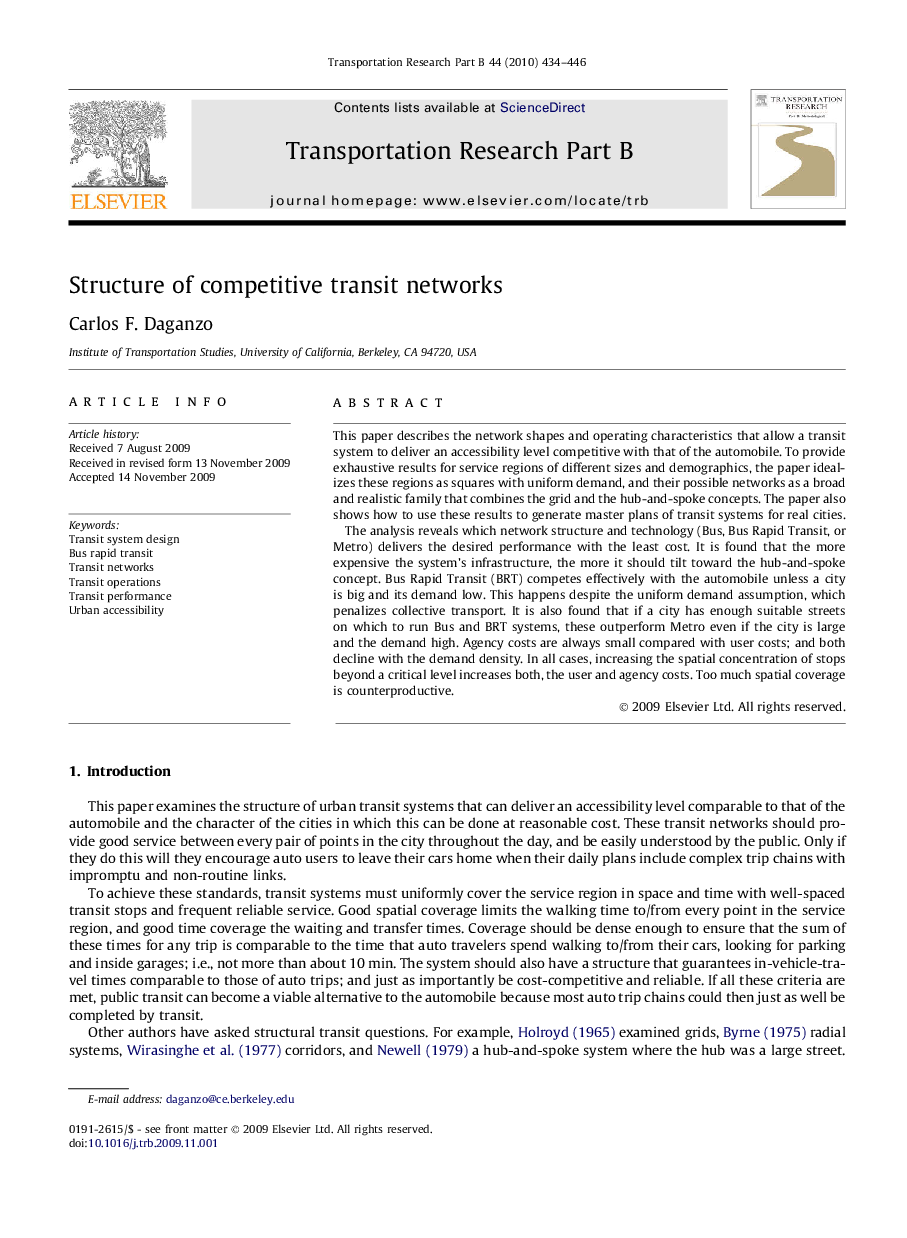| کد مقاله | کد نشریه | سال انتشار | مقاله انگلیسی | نسخه تمام متن |
|---|---|---|---|---|
| 1132413 | 955777 | 2010 | 13 صفحه PDF | دانلود رایگان |

This paper describes the network shapes and operating characteristics that allow a transit system to deliver an accessibility level competitive with that of the automobile. To provide exhaustive results for service regions of different sizes and demographics, the paper idealizes these regions as squares with uniform demand, and their possible networks as a broad and realistic family that combines the grid and the hub-and-spoke concepts. The paper also shows how to use these results to generate master plans of transit systems for real cities.The analysis reveals which network structure and technology (Bus, Bus Rapid Transit, or Metro) delivers the desired performance with the least cost. It is found that the more expensive the system’s infrastructure, the more it should tilt toward the hub-and-spoke concept. Bus Rapid Transit (BRT) competes effectively with the automobile unless a city is big and its demand low. This happens despite the uniform demand assumption, which penalizes collective transport. It is also found that if a city has enough suitable streets on which to run Bus and BRT systems, these outperform Metro even if the city is large and the demand high. Agency costs are always small compared with user costs; and both decline with the demand density. In all cases, increasing the spatial concentration of stops beyond a critical level increases both, the user and agency costs. Too much spatial coverage is counterproductive.
Journal: Transportation Research Part B: Methodological - Volume 44, Issue 4, May 2010, Pages 434–446